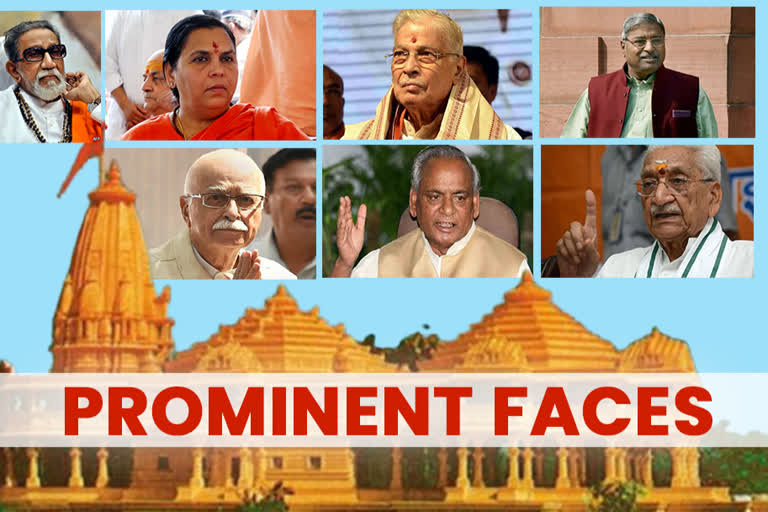Ayodhya: Prime Minister Narendra Modi is scheduled to attend the Bhumi Pujan for Ram Mandir on August 5. The 70-year-old dispute on a religious structure at Ayodhya was settled on November 9, 2019 when a five-judge bench paved the way for construction of Ram Mandir. Several people had played a key role in spearheading a movement for the building of the temple at the site.
The events related to Ram Mandir dates back to 1950 when the first title suit was filed by Gopal Singh Visharad asking for the right to worship the idols installed at ‘Asthan Janmabhoomi’. Devotee Gopal Singh Visharad, who had filed a lawsuit in a lower court seeking the right to pray at the site, however, died in 1986 and the legal fight was later taken up by his son Rajendra Singh.
Subsequently, in 1959, Nirmohi Akhara entered the fray and filed the third suit, seeking possession of the site. It claimed itself to be the custodian of the spot where Lord Ram was believed to have been born. Mahant Bhaskar Das was the sarpanch of the Nirmohi Akhara, one of the main claimants of the title suit in the Ayodhya case. Das represented the sect for several years.
The Vishwa Hindu Parishad (VHP) started the nationwide movement for the construction of the temple at the site in Ayodhya. Ashok Singhal, the president of VHP, was one of the people behind the campaign in 1984 that demanded a Ram mandir in Ayodhya. He is considered as one of the architects of the Ram Mandir movement.
Mahant Avaidyanath was a leader of the Lord Ram Janambhoobi movement who also played an important role. Avaidyanath founded the Sri Ramjanmabhoomi Mukti Yagna Samiti to liberate Ram's birthplace.
The founder president of Bajrang Dal and veteran BJP leader Vinay Katiyal supported the Ram Janambhoombi Movement. He also volunteered for Rashtriya Swayamsevak Sangh to accomplish the mission.
READ: Ayodhya Timeline: Here's how the events unfolded
As events unfolded, a fresh suit was filed by former VHP vice-president Deoki Nandan Agarwala in the name of Lord Ram for declaration of the title and possession in its favour at the Lucknow bench of the Allahabad high court.
In 1989, VHP carried out Shilanyas ceremony in Ayodhya and the first stone of the planned Ram temple was put in place.
The then BJP President L.K. Advani launched Rath Yatra from Somnath in Gujarat with a resolution to built Ram Mandir at Ram Janmbhoomi. The Rath Yatra is said to have stirred the sentiments in favour of a Ram Mandir in Ayodhya.
Ram Mandir Movement gained momentum under the leadership of LK Advani and Murli Manohar Joshi and the idea of a chariot traversing across the country worked as a great mobiliser. It was in 1991 when Murli Manohar Joshi took over as the BJP President and played a major role to reclaim the birthplace of Lord Ram.
Rath Yatra, organised by BJP leaders and Hindu nationalists affiliates, gathered the support of VHP and Sangh Parivar to erect a temple.
Kalyan Singh, who served as the first Chief Minister of Uttar Pradesh government, acquired 2.77 acres of land around the disputed site. Singh took a vow to construct Ram Mandir and worked diligently towards a peaceful consensus.
Shiv Sena Founder Bal Thackeray was at the forefront of Ram Mandir Movement and had supported the cause from much earlier on.
Senior BJP leader Uma Bharti became one of the major faces of the Ram Janmabhoomi movement along with other BJP leaders. She gave fiery speeches which helped the Ram Mandir Movement to gain momentum and she became one of several prominent Sangh Parivar figures identified with the movement
The role of these prominent leaders marked the turning point of the entire Ayodhya dispute to make the construction of Ram Mandir possible at the site.
READ: Mobilisation for temple-building at Kashi, Mathura to start soon: Vinay Katiyar



